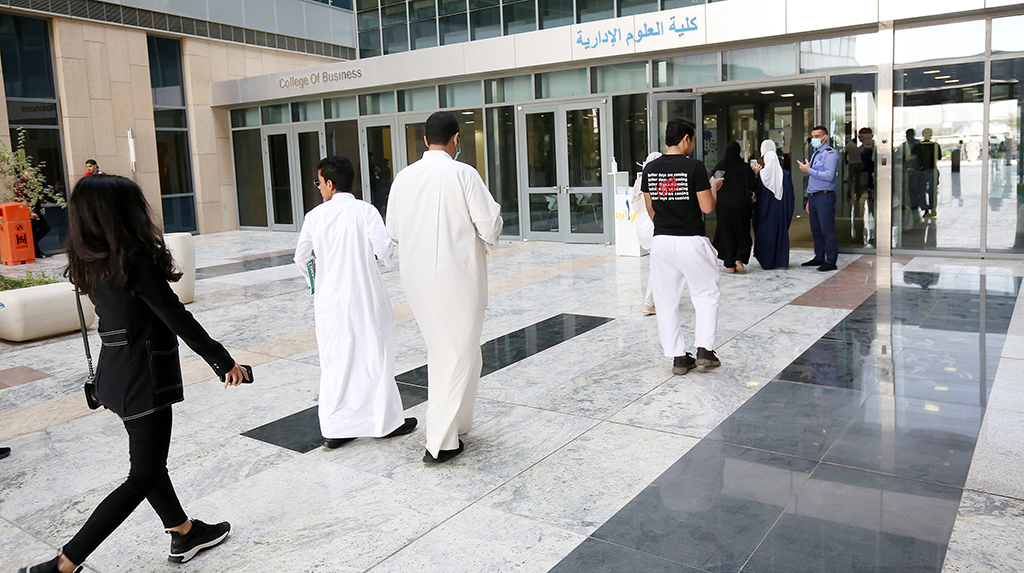KUWAIT: The government established Kuwait University in 1966, distributed over buildings in various residential areas of Kuwait. In the early 1980s, the government decided to build a comprehensive university. But this took about 40 years to complete, with its costs doubling several times and its buildings catching fire on seven different occasions. During that long period, high school graduates compounded and reached 44,600 students in the academic year of 2020/2021 (including adult education graduates) at a compound annual growth rate of 6.2 percent for the last seven years.
To accommodate this large number of students during the long construction period of the public university, besides the Public Authority for Applied Education and Training (PAAET), 15 private higher education institutions were established and operated in addition to five other institutions under construction. The two public institutions still accommodate the most significant number of students (about 77,000 students for the last academic year) or about 66 percent of the total number of higher education students.
Kuwait University, the largest university, comprises 16 colleges in addition to higher studies. Some of these colleges are outstanding. Nevertheless, according to various performance indicators, the KU ranking has descended beyond the first one thousand best universities in the world according to the "QS World University Rankings", with PAAET outputs remaining irrelevant to the labor market. In a country where the state monopolizes about 90 percent of the land, the overpriced and unjustified land prices make establishing any competitive service or commodity project almost impossible.
Selecting a private institution for higher education, it depends entirely on the state granting a piece of land for a certain number of years, fixed and short. This represents a pressure factor in restoring the project's financial investment and profits in the shortest period, which may give preference to the commercial factor over the educational side. No one notices the low level of educational outcomes as long as the salary of the public office is linked to the certificate, regardless of the class, specialization, or even the need.
Further, it makes no difference whether the certificate is real or fake. Therefore, about 63 percent of the public sector employees hold certificates ranging from post-secondary degrees to PhDs; nevertheless, the sector's productivity is very low. All-Shall estimates that the tuition costs of a student at the Kuwait University are about KD 13,000 annually and about KD 8,000 at PAAET's institutions. A scholarship abroad student costs about twice the cost at Kuwait University, while the average tuition for private higher education universities ranges between KD 6,500-7,500, and between KD 4,500-5,500 for private higher education colleges.
As in the case of public education, the problem is not in the scarcity of money but in its waste and misdistribution. Within the "QS" ranking of universities, there are 48 Arab universities in the thousand best universities list in the world: 14 Saudi universities, including two universities ranked 109 and 163, UAE has 11 universities with one ranking 183, Lebanon has 8, Jordan has 4 and Bahrain has 3, while Kuwait has only 2 universities. These 2 private universities are the American University of the Middle East (AUM) in the 701-750 category and the Gulf University for Science and Technology (GUST) in the 801-1000 category. This means that Kuwait is not among the top 700 universities in the world.
We emphasize that educational reform is a priority, and any talk without a revolution that rescues it will only be a mirage. Besides and according to our estimates, the costs for a student at a public university is twice the cost at private educational institutions, which is only acceptable if it is linked to the increase of public university rankings and the abundance of its research opportunities compared to those of the private education institutions.
What happens in reality is quite the opposite, which warrants an essential action plan. Granting lands for a unified period to private education institutions is the wrong procedure. Instead, it should be linked to the progress within the categories of the scientific classifications; even if it extends to 100 years for those that continue to break the classification numbers for the better or withdrawn from those who fail. What is at stake is not money but the development of the human capital. - Al-Shall











